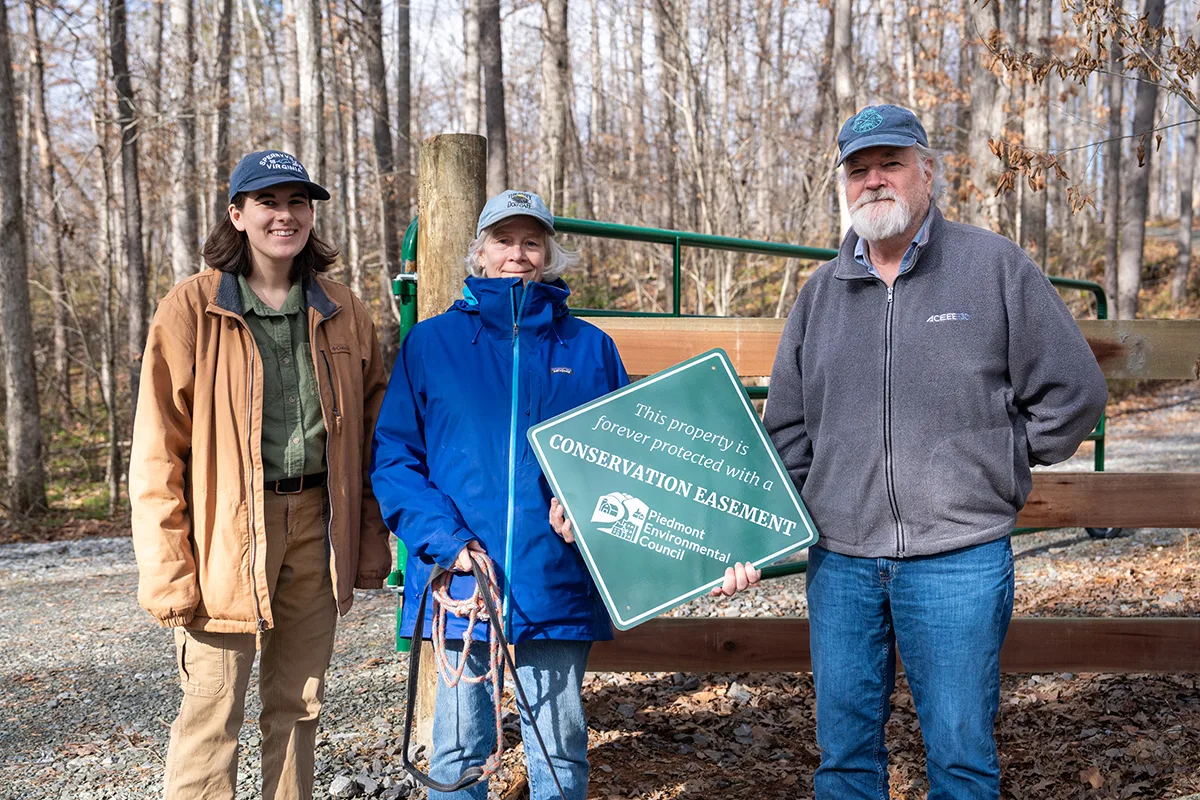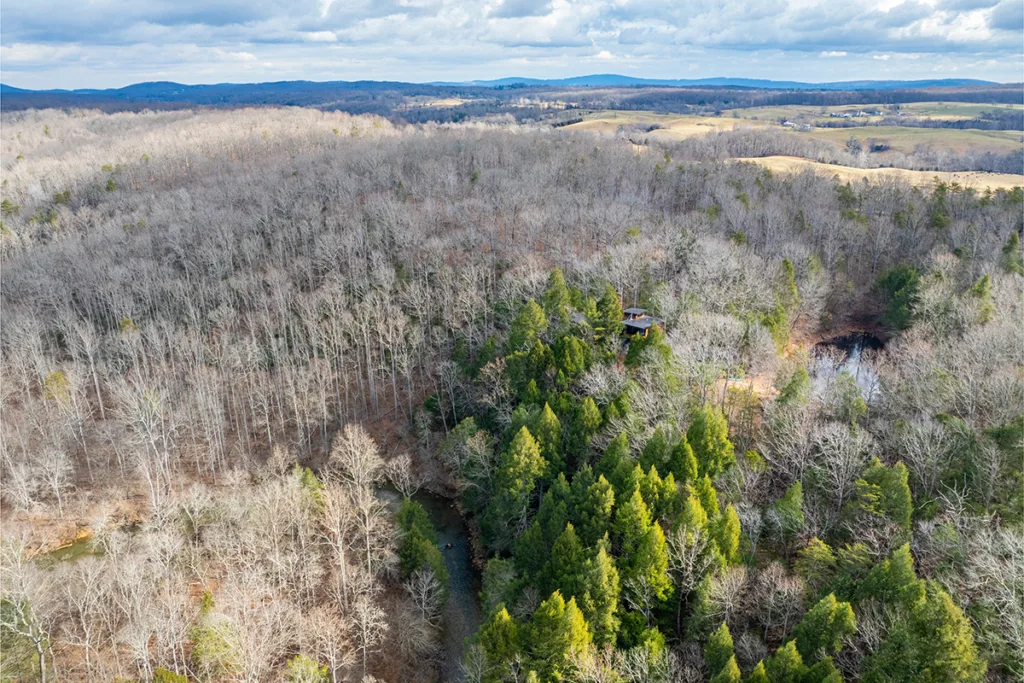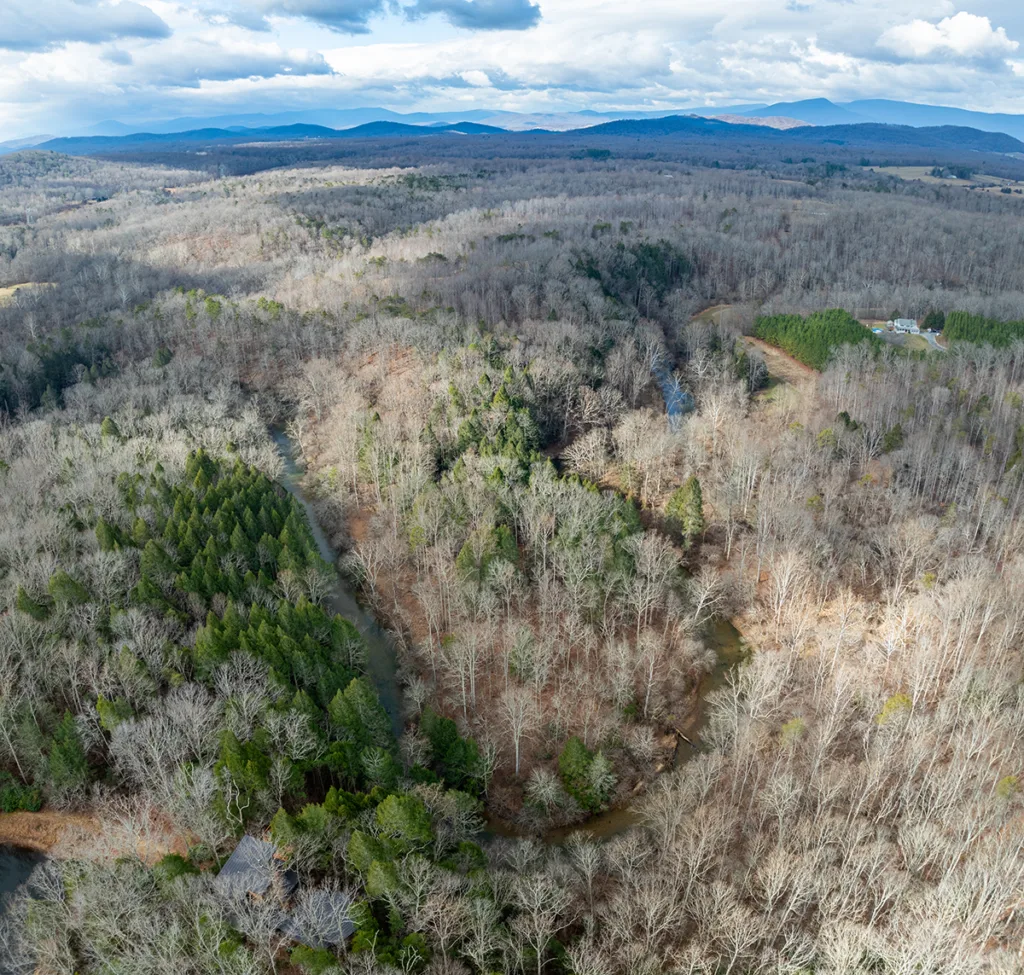Walking along the gravel driveway of Anne and Dru Crawley’s property, five miles from the village of Amissville, I recognized immediately the significance of this 63-acre stretch of land. I’m greeted first by the rolling hardwood and hemlock forest carpeted by thick groves of Diphasiastrum digitatum, a small evergreen plant better known by its common names: running cedar or ground cedar. Further in, the elevation steeply drops off toward the Rappahannock River meandering below it, with resilient trees growing even on its most dramatic slopes.
This property in western Fauquier County has been in Anne Crawley’s family for over 50 years, and Anne and Dru have brought unfettered enthusiasm to their relationship with the land as its stewards. They’d been considering the permanent protection of this special place for quite a while. And when Anne attended PEC’s 2023 annual meeting, enthusiasm turned into action. Less than six months later, we gathered in PEC’s Warrenton Office to sign the required documents, and the conservation easement was recorded at the Fauquier County Circuit Court Clerk’s office that afternoon. I’m not sure, but it may have been one of the quickest easement projects in PEC history, thanks to the excitement and determination of everyone involved.

At the landscape scale, the permanent protection of the Crawley’s forested riverfront land is a key piece of the Upper Rappahannock watershed puzzle. It is the connecting piece between two sets of properties already under conservation easements with the Virginia Outdoors Foundation. Altogether, they form 3,000+ connected acres of protected land around the Rappahannock River and its tributary Thumb Run.
Large patches of open and forested natural land like this give wildlife lots of area in which to move safely about to access food, shelter and other populations. More and more, such corridors are being fragmented by roads and development, making the Crawley’s conservation decision so important. In fact, the Virginia Wildlife Corridor Action Plan specifically includes the Crawley property in a map of “Corridors for Wildlife Biodiversity Resilience.”
But they didn’t need an action plan to know the significance of their property as a haven for wildlife. “Anne’s mother introduced me to her love of wildflowers more than 30 years ago. I have fond members of wandering through the woods looking for them with her,” said Dru. “A few years ago, Anne and I started using [the popular nature app] iNaturalist to document the flowers, plants, and animals on our property. I was surprised at the variety we found!” The list of 260 different species of plants and animals continues to grow.


By extinguishing the development rights on their property, the Crawleys have forever protected 100 feet of forest and vegetation along their portion of the Rappahannock River, helping prevent erosion, filtering pollution and excess nutrients from entering the river, and providing shade and cover for wildlife. Their conservation decision also benefits people farther downstream, as their property lies amid the headwaters of the Rappahannock River, which provides drinking water for the City of Fredericksburg and other communities.
From wildlife habitat to water quality and beyond, each new piece of land that joins the ranks of permanently protected properties further strengthens quality of life and sense of place in the Piedmont, contributing immeasurably to overall human health and well-being. And, all because each landowner, like the Crawleys, decided to embark on the journey of making their ethos of responsible land stewardship perpetual.
This article appeared in the 2024 spring edition of The Piedmont Environmental Council’s member newsletter, The Piedmont View. If you’d like to become a PEC member or renew your membership, please visit pecva.org/join.
